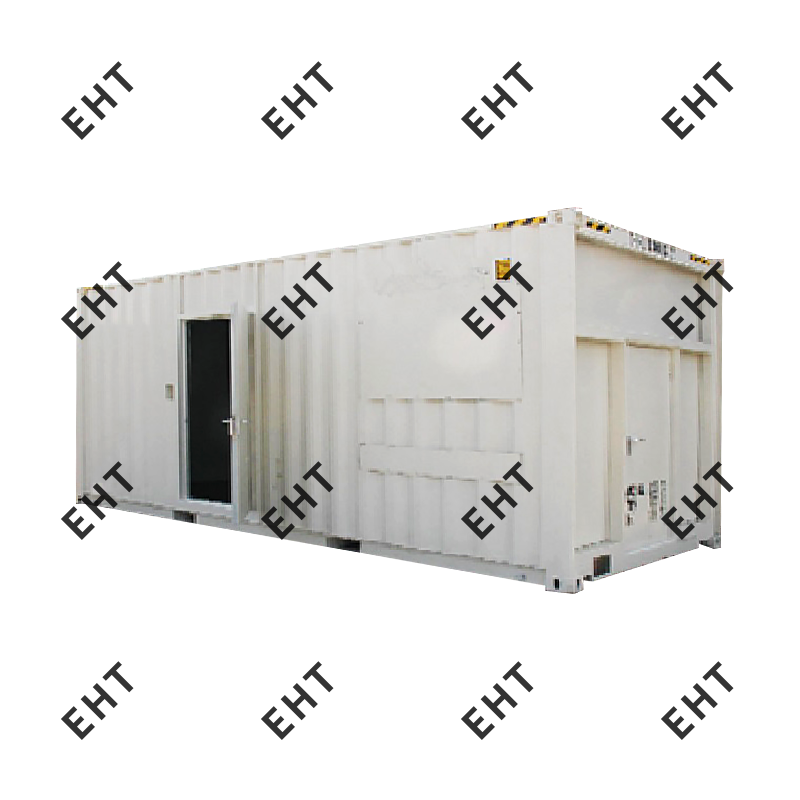The main fire safety features integrated into diesel generator containers are designed to prevent ignition, detect fires early, suppress them effectively, and comply with international fire safety standards such as NFPA 110, ISO 19889, and IEC 60079-10. These features are critical due to the presence of flammable fuels, high temperatures, and electrical components. Below are the key fire safety components commonly implemented:
1. Fire Detection Systems
Heat Detectors: Monitor ambient temperatures in critical zones (engine compartment, fuel tank area).
Smoke Detectors: Detect combustion by-products in confined spaces, especially useful for slow-burning fires.
Flame Detectors: Optional in high-risk installations, capable of recognizing infrared or UV signatures of flames.
2. Fire Suppression Systems
Automatic Fire Suppression: Typically uses clean agents (e.g., FM-200, Novec 1230) or dry powder systems to suppress electrical and fuel fires without damaging sensitive equipment.
Manual Fire Extinguishers: Dry chemical or CO₂ extinguishers installed at access points as backup.
3. Fire-Rated Construction Materials
Fire-Resistant Insulation: Acoustic and thermal insulation materials with flame-retardant ratings (e.g., mineral wool with Class A fire rating).
Fire-Rated Bulkheads and Panels: Often used to separate the engine room from fuel storage or control systems.
4. Fuel System Protection
Double-Walled Fuel Tanks: Help prevent leakage and reduce fire risk due to rupture.
Fuel Leak Detectors: Trigger alarms if leakage is detected.
Fire-Resistant Fuel Hoses and Valves: Made from materials that resist ignition and maintain integrity under high heat.
5. Ventilation and Exhaust Safeguards
Spark Arrestors: Installed on exhaust outlets to prevent emission of sparks that can ignite flammable materials.
Thermal Lagging: Applied to hot exhaust components to reduce the risk of heat-induced ignition.
Explosion Relief Panels: In some high-risk zones, designed to vent pressure in case of an internal explosion or rapid combustion.

6. Electrical Safety Measures
Overcurrent and Short-Circuit Protection: Circuit breakers and fuses prevent electrical faults that can trigger fires.
Fire-Rated Cable Trays: Maintain circuit integrity under fire conditions.
Grounding Systems: Prevent static charge buildup that could lead to sparks.
7. Emergency Shutdown Systems
Remote Emergency Stop Buttons: Located outside the container to shut down the generator safely in case of fire.
Automatic Engine Shutdown: Triggered by fire detection or suppression system activation.
8. Fire Safety Compliance and Labeling
Compliance with NFPA, ISO, or local codes: Ensures the container meets regional fire safety regulations.
Clearly Marked Fire Exits and Extinguisher Points: Aid in safe evacuation and emergency response.
Summary
Diesel generator containers incorporate a multi-layered fire safety strategy including:
Active systems (detection and suppression)
Passive protections (fire-rated materials and design)
Preventive measures (fuel and exhaust safety)
Compliance with industrial safety codes
These systems work together to minimize fire risks, protect equipment and personnel, and ensure operational continuity, especially in critical applications like hospitals, data centers, and remote installations.






